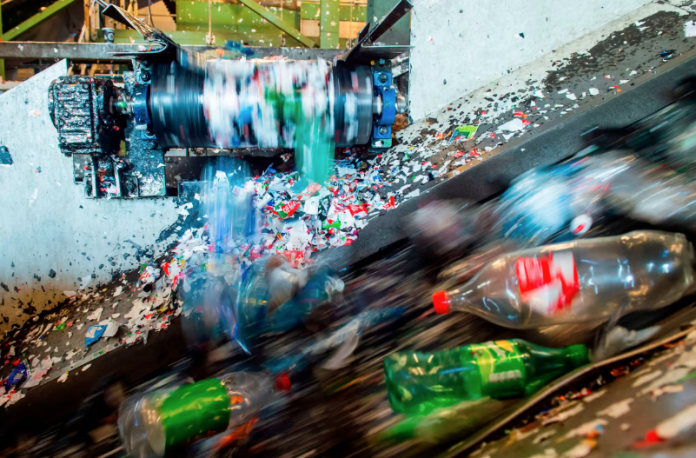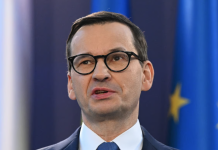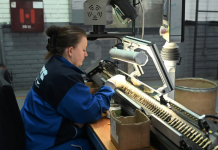
EU countries are behind on most, if not all, their sustainability commitments.
Jan. 1 wasn’t only marked by headaches and regrets this year. For EU countries, 2025 also kicked off with a nerve-racking reminder of all the environmental commitments they have to meet under EU law.
On its rocky road to becoming an environmental haven by 2050, the EU has set interim targets to track progress on reducing pollution levels, planet-warming greenhouse gas emissions, and restoring nature.
From separate collection of waste to financing biodiversity projects, here are five targets that the bloc’s 27 member countries should be meeting this year (and, for the most part, aren’t).
Textiles
One of the EU’s main sustainability objectives is to reduce the harmful effects of its waste on the environment. To do that, Brussels expects its members to have effective collection systems in place for a growing list of types of waste. Glass, paper, food … you know the drill.
As of Jan. 1, EU countries must also collect garments and fabrics separately. That means those unusable shoes, old jackets and dirty bedsheets can’t go in mainstream trashcans anymore.
The latest round-up of data from the EU’s environmental watchdog, dated May 2024, shows that only 11 countries had mandatory separate collection systems in place, and another 14 had introduced voluntary initiatives.
In the same spirit of reducing waste in the fashion sector, the EU has also banned the destruction of unsold clothes and shoes. But that decision isn’t without consequence. A recent investigation by the Organized Crime and Corruption Reporting Project (OCCRP) revealed that Romania has become a dumpsite for discarded clothes in the EU as tons of donated garments end up in the trash.
Recycling
The tighter rules on waste management fit within the EU’s broader strategy to retrieve the valuable materials in goods that get thrown out to repurpose them.
In 2025, EU countries should be recycling or “preparing for reuse” at least 55 percent of municipal waste, according to the EU’s waste law.
But there are product-specific targets too. For example, the 27 countries should be recycling at least 65 percent of their packaging waste — like takeaway containers, paper wrappers and cardboard boxes — and 65 percent of all the electronic goods (think of all those phones, tablets, electric whisks and vacuum cleaners) placed on the EU market in the last three years.
It’s hard to know exactly if the region is on track to meet these targets or not, since the latest data from the EU’s statistical office, submitted by EU governments themselves, is from 2022.
Still, POLITICO can make an educated guess — firstly, because in the summer of 2023 the Commission warned that the majority of countries were likely going to miss the targets in its progress report.
Secondly, because the numbers speak for themselves. In 2022, Germany, Austria, Slovenia and the Netherlands were the only countries already meeting the 2025 municipal waste targets, while Belgium, Luxembourg and Italy were just a few basis points away from the target line. Over half of countries were already meeting the packaging targets, however.
Plastics
Zooming in on plastics, Brussels has set some rules for its production, use, and recycling.
In 2025, EU countries are supposed to be collecting 77 percent of single-use plastic beverage bottles put on the market. And to make things even greener, all the new bottles produced as of this year and sold in Europe should include at least 25 percent of recycled plastic inside them.
The Commission’s statistics office does not currently report figures for beverage bottles only, but some companies active in the sector are eager to demonstrate their business models are delivering results.
For example, Sensoneo — a Slovak waste management company that sells deposit-return equipment where customers pay an extra fee when purchasing a bottle or can which they get back once they return the product — argues that EU countries with this technology in place have collection rates above 80 percent.
Nature
When it comes to protecting nature, most of the EU’s targets are set for 2030, giving its members a bit more legroom to adapt. But as a regional bloc, the EU still has some commitments to live up to, especially on the international stage.
Existing laws on land use state that the EU was supposed to maintain its carbon sink levels between 2021 and 2025. What are carbon sinks, you ask? They’re natural assets like forests or wetlands that soak up and hold on to planet-warming CO2.
Despite Europe’s best efforts to regulate land use and protect forests by law, the continent’s carbon sinks are shrinking.
Like most things, restoration and protection costs money. During the 15th U.N. Biodiversity Conference, which took place in Montreal in 2022, countries (including the EU) pledged to spend at least $20 billion annually in development aid for biodiversity in developing nations by 2025.
As of 2024, funding commitments for biodiversity were only in the millions.
Cars
After energy generation and heating, transport is the most polluting sector in Europe, and Brussels wants carmakers to do something about it.
That’s why it told carmakers that by the end of 2025, a car should generate 15 percent less CO2 than it did in 2021.
The penalty if carmakers miss this target is set at €95 for each gram of CO2 per kilometer above the threshold, which they’d have to pay for every non-compliant vehicle. Ouch.
According to the green transport NGO Transport&Environment, however, this is one area where things are looking good.
Using 2024 sales data from analytics firm Dataforce and GlobalData, and estimates on future electric and hybrid vehicle sales, the NGO suggests most carmakers will be compliant by the end of the year.





















